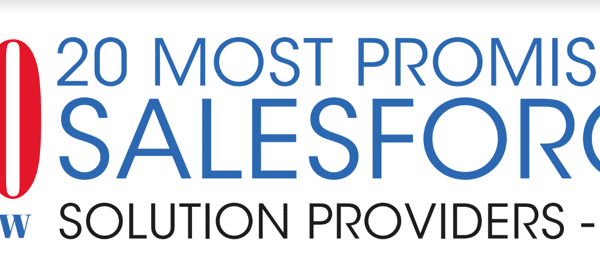11 Things a Great Opportunity Plan Must Include
Planning is critical to winning and an opportunity plan is the tool that allows a sales team to do exactly that. Contrary to the beliefs of many though, opportunity plans don’t have to be time consuming or difficult to create or maintain, and have the added benefit of providing continuity during account transitions. They provide the new account team a history of customer interactions, opportunity and customer insights and a plan to win.
-
Strategy to Win
A clearly defined strategy to win ensures the entire team is moving in unison towards winning the deal. To that end, the entire team must be involved in the strategy creation.
In this example the strategy is heavily tied to the initial customer meeting and their requirements.
Our strategy is to use a frontal attack since we have a superior solution based on the initial customer meeting and their stated requirements. We will leverage the following:
We are an ideal fit based on the following customer requirements:
- 100% integration with Salesforce
- Ability to map to their current sales methodology
- Mobile access from any device via native Salesforce products
- Mobile access from iPad using Meeting Mapper mobile
- Meeting Planning and Execution
- Opportunity Planning – Playbook
- Account Planning – Playbook
- Robust Business Intelligence
- No extensive or expensive training
- Limited or no professional services required
-
Tactics to Support the Strategy
Once you have your strategy to win, you must have tactics to support the strategy. Tactics can change over the life cycle of the opportunity as new information is gathered, requirements change and the competitive landscape is identified or changes.
Example:
- Leverage current ‘What’s Hot’ from customer meetings
- Review Sales Empowerment Dashboards
- Leverage relationships within accounts
- Exploit/Highlight
- Crawl, Walk, Run deployment method
- Meeting templates
- Opportunity Mapper templates
- One click dynamic Opportunity Playbook
- Account Mapper templates
- One click dynamic Account Playbook
- One click Business Intelligence Report/Brief (BIRB)
- No professional services required
- No extensive expensive training required
- Actionable Intelligence
- Data points gathered by Meeting Mapper (KPIs)
- Ease of installation and configuration (up and running the same day)
- 5 Star rating on Salesforce Appexchange
- Leverage Reference customers
-
Value Proposition
What value do your products, solutions and/or services bring to the customer? What sets you apart from all the competitors? Can you and your team clearly articulate this value?
Example:
Strategy Mapper is the most cost effective, powerful, configurable, comprehensive and easy to use Strategic Selling solution for Salesforce! Strategy Mapper provides sales leadership unparalleled visibility and access on the progress of Accounts and Opportunities, to ensure revenue goals are met and exceeded.
Strategy Mapper is redefining how sales organizations sell by using robust and accurate information to efficiently drive revenue. Customer meetings are at the heart of the sale cycle but are the least documented in an organization’s CRM. Strategy Mapper gathers customer intelligence and turns this information and data into the building blocks or “DNA” of Account Strategy and Opportunity Planning and does it in real-time as each sales cycle progresses.
-
Defined Customer Buying Process
Normally the customer buying process is defined at the account level in the Account Plan. Every opportunity has to include it. This will ensure your selling process is aligned with the customer’s buying process.
Example:
- Identify the Problem
- Review Options
- Bring in Top 3 Vendors
- Pilot/Trail Selected Vendor(s)
- Sign Contracts
-
Customer Requirements
Knowing the customer requirements and having them in the opportunity plan is critical for winning. This ensures the entire team understands them and how your products, solutions or services meet them resulting in a “solution score”. An important point to make is, if your solution score is low the opportunity might be unwinnable.
-
Stages of the opportunity
Quickly knowing what stage the opportunity is in and what meetings have been conducted in each stage ensures your opportunity is moving to closure. As a sales leader you can easily see if the opportunity is stuck in a certain stage. For example, there have been 3 meetings in the stage, “Identify the Decision Makers”. To me this could indicate two possibilities:
- The rep is engaged with the account but not at the right level to identify the decision makers and may need assistance.
- The customer is resistant to identifying and having us meet with the decision makers meaning this may not be a real opportunity. So we’ll need to facilitate this identification and meeting or walk away from the deal.
-
Competitors
Identifying competitors and knowing their strengths and weaknesses may be a key to winning. If you don’t know who you are fighting, you can’t effectively position your solution to the customer and develop the appropriate tactics on this opportunity.
-
Meetings
As part of the opportunity plan, customer meetings with the appropriate subject matter must be scheduled, executed and documented. As the meetings progress the customer intelligence that is gathered will be leverage to dynamically adjust the plan.
-
Customer Team
Identifying and documenting the players in the opportunity may seem like a no-brainer, but in many cases this doesn’t get done effectively. By documenting this aspect of the plan the entire team can see the players and their stance relative to the deal. This can flag potential issues. Take for example an opportunity where there are two decision makers, the CIO and an IT director. The CIO’s stance is against the deal, while the IT director is for it. This obviously raises a flag that must be dealt with. In this case you may alter your tactics to have an executive sponsor directly contact the CIO help drive the deal to closure. This also provides visibility to the entire team and may lead to leveraging relationships that would otherwise be unknown.
-
Account Team
The make-up of the account team can be very important to some opportunities so identifying and collaboration between the right account players is also very important to document in the opportunity plan.
-
Playbook
Though a playbook is not technically part of the opportunity plan, it does play a vital role in the execution of the plan. This is the summary of the plan, along with the current opportunity landscape and provides guidance for the plan’s execution. Ideally it is easy to update so it stays relevant as the opportunity progresses. Too many times a plan is created and documented, but never updated as the landscape changes resulting in a document that is of little value to the current opportunity and cannot be leveraged in future opportunities.
Example of an Opportunity Playbook
Though all of this can be done outside your CRM, it’s so much easier and beneficial if it’s integrated. What I mean is the plan should reside in and leverage your CRM. This type of integration allows you to quickly and easily build and maintain your plans with all of the data your CRM contain





An ecellent guide. I strongly believe in a value proposition. Without this, its hard for any plan to be a complete success.